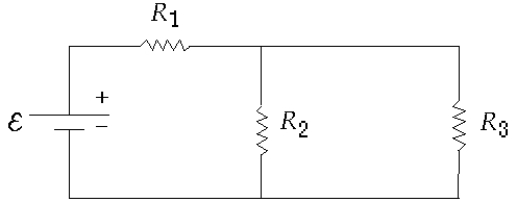Multiple Choice
 A comparison of the power losses (P1, P2, or P3) in the resistors of the circuit in the diagram shows that, if R1 = R2 = R3,
A comparison of the power losses (P1, P2, or P3) in the resistors of the circuit in the diagram shows that, if R1 = R2 = R3,
A) 4P1 = P2 = P3
B) P1 = 2P2 + 2P3
C) P1 = P2 = P3
D) P1 = (1/2) P2 = (1/2) P3
E) P1 = P2 + P3
Correct Answer:

Verified
Correct Answer:
Verified
Q3: Use the following figures to answer
Q8: Given a sensitive galvanometer G and a
Q19: <img src="https://d2lvgg3v3hfg70.cloudfront.net/TB6081/.jpg" alt=" The curve that
Q20: A potential difference of 120 V
Q27: <img src="https://d2lvgg3v3hfg70.cloudfront.net/TB6081/.jpg" alt=" The current I
Q28: <img src="https://d2lvgg3v3hfg70.cloudfront.net/TB6081/.jpg" alt=" If three resistors
Q29: <img src="https://d2lvgg3v3hfg70.cloudfront.net/TB6081/.jpg" alt=" If a current
Q41: The conservation of energy in an electric
Q74: A 20- <span class="ql-formula" data-value="\mu"><span class="katex"><span
Q91: Tony charges a capacitor and then discharges